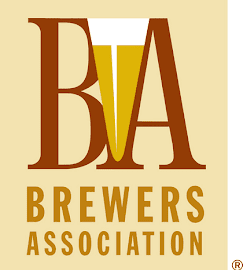Misconception #1: "What year is the beer?"
At music and beer pub Galaxy Hut in Arlington, Virginia, I was pouring pints from a firkin (a 10.8 gallon cask) of Loose Cannon Hop3 Ale (Clipper City Brewing Company).
The questioner had mistaken fresh cask-conditioned ale for aged barrel-aged beer. This despite the sign hanging immediately behind me and the cask.
Whenever I think I'm sounding like a skipping disc, I find I need to say this again ... and then again. Cask-conditioned beer is beer so fresh that it is still fermenting. In fact, freshness is the point of cask ale. Even so-called extreme beers, as big as they are, will lose their ur-freshness, their just-fermented sparkle, when cellared or aged.
Misconception #2:"That's not a cask"
Another patron thought that casks were, by definition, wooden. And as this firkin was stainless steel, it really wasn't a cask, was it?
True, casks were once commonly constructed from wood. That of course, was the common construction material for beer barrels. But brewers would line their wooden casks with pitch or other substances to aggressively forestall the leaching of the flavor of wood into the beer, or the leaching of the beer out of the cask. The wood was not the flavoring.
And, anyway, that misses the point. A cask is a vessel in which the beer completes its fermentation, or gains its effervescence. In a real manner, a cask is a brewery fermenter, albeit small, brought to the bar. The material is irrelevant.
"So, what is the difference between a firkin and a cask?" I was asked.
All firkins are casks, but not all casks are firkins. In other words, a firkin is a specific size of cask at 9 Imperial gallons, which in US measure is 10.8 gallons, or approximately 41 liters. Some casks are half that size (pins), some double that size (kilderkins), and others, other dimensions. The largest cask is the entire butt(!) at 129.6 US gallons.
Misconception #3: But shouldn't cask ale be poured through a beer engine?
The short answer: it can be but doesn't have to be. A cask can be poured simply by driving a tap into the keystone, and opening the spigot.
Or it can be pulled through a line with a beer engine, a fancy name for a simple but elegant hand pump that pulls beer through a line —unmotorized despite its name. Randy Mosher puts it well in his new book, Tasting Beer:
hand pumps, although a highly visible part of the regalia of real ale, actually add nothing to the flavor or texture of the beer ... they are simply a means of elevating the beer up to the bar level from the cellar.
Invented in 1797 by Joseph Bramah —the inventor of the hydraulic press— beer engines eased the pain of creaky knees, sore from running up and down the steps of pub cellars, where the casks were stored to keep them cool.
When the handle is pulled, the beer is pulled from a cask into a cylinder in the beer engine. Further action pushes the beer from the cylinder into the glass, usually through a 'swan-neck'.
As Mosher indicates, a beer engine adds nothing to the flavor of the cask ale. It neither adds or subtracts from cask ale. It's merely a method to move beer without extraneous gas. It may, however, agitate the already low volume of carbonation out of solution, pouring a less carbonated beer. Here's a description from Stonch's Beer Blog, a pub operator in the UK:
A sparkler is screwed to the end of the nozzle of beer engine. It's perforated with small holes like a shower head. The beer is forced through these into the glass, agitates and aerating it, producing a large head. Bittering agents migrate to the bubbles that form this creamy layer, altering the flavour and mouthfeel of the pint. I suppose that's a good thing for those who want a beer with less bite.
As implied, sparklers do not have to be screwed onto beer engines. Stonch serves his cask ales without. He detests "the demonic little things."
Even without a sparkler —and even poured by gravity, without a beer engine— a well-conditioned cask will pour a pint with an upward cascade of bubbles that coalesces into a collar of foam.
This is a naturally produced effect of cask ale that a certain stout manufacturer artificially imitates by injecting nitrogen into its beers (and to be honest, as do many 'craft' brewers with 'nitro' taps).
****************
Galaxy Hut has a noble beer pedigree that leads back to the early 1990s craft beer revival in northern Virginia. Read more.



.png)







No comments:
Post a Comment
Comment here ...